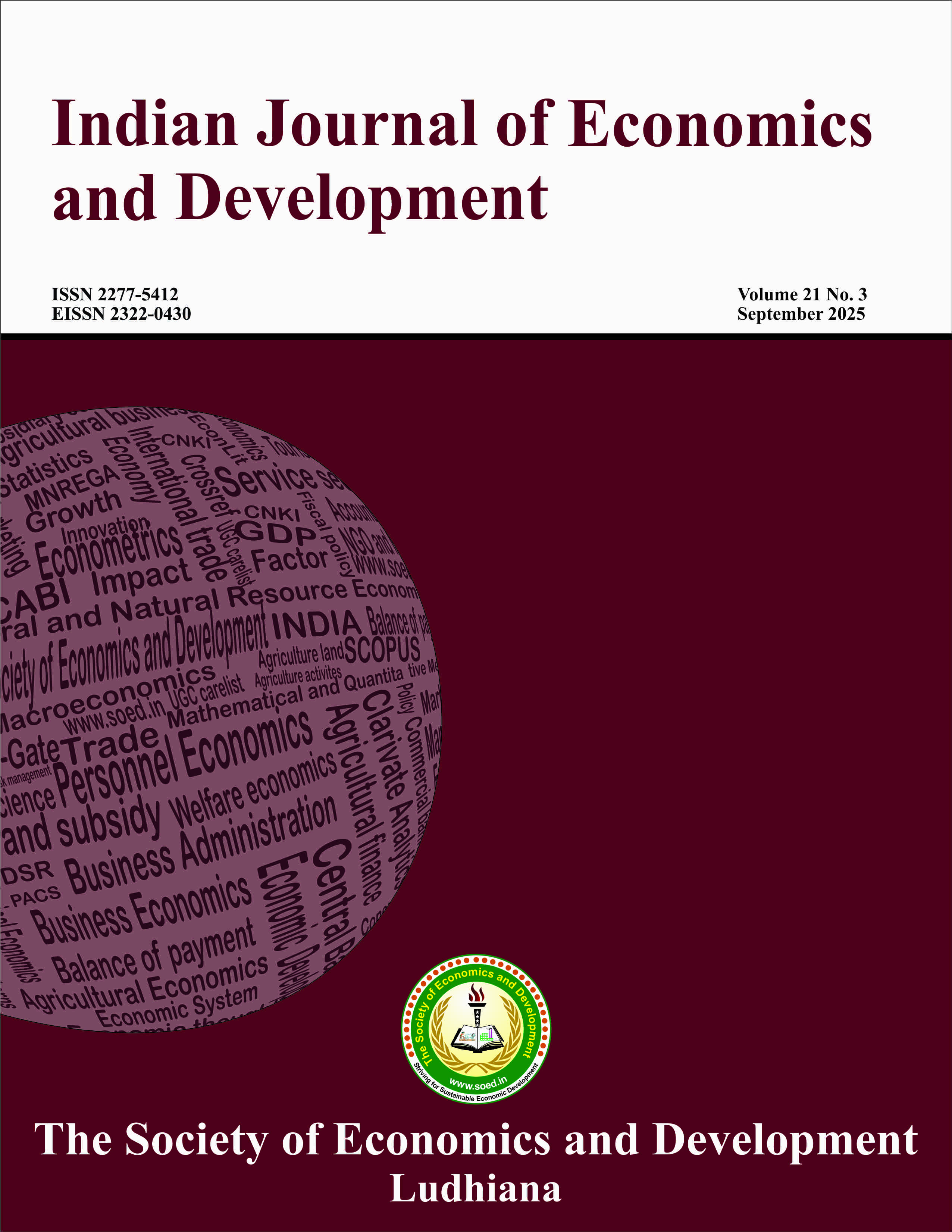Dimensions of Crop Diversification in Gujarat

Price: ₹ 500
Author: Deepak Pandey, Yogesh Garde, Vishal Thorat, Nitin Varshney, Sagar Wadkar and Alok Shrivastava
Author Address: ICAR-Indian Agricultural Statistics Research Institute, Library Avenue, Pusa, New Delhi-1100012 (Delhi), Department of Agricultural Statistics, N.M. College of Agriculture, Department of Agribusiness Economics and Finance, ASPEE Agribusiness Management In
Keywords: Change detection point, crop diversification index, growth rate, instability, MLR.
JEL Codes: L25, Q10, Q11.
Abstract
In Gujarat, small and marginal farmers' economic well-being relies on agriculture and crop diversification, offering a promising path to economic upthrust. This strategy mitigates farming risks and has potential benefits for nutrition and the environment among global challenges. This study examined the growth, trends and determinants of crop diversification in Gujarat by analysing 24 years (2000-01 to 2023-24) of time series data on area, production and productivity of major crops. The study findings revealed that substantial increases in the area under cereals and pulses, especially wheat and gram, indicated a shift toward foodgrain cultivation. While the compound annual growth rate (CAGR) for cereal area remained stable (0.25 per cent), production and productivity exhibited significant growth (3.46 and 3.24 per cent, respectively). Instability analysis showed low to moderate variability across crops, with productivity being the major contributor to production volatility. The cubic trend model effectively captured the non-linear patterns in crop dynamics, with significant change points detected in 2005–06, 2010–11, and 2020–21, likely driven by policy, technological or climatic shifts. A comparative analysis of diversification indices revealed improvements in crop diversification over time, particularly in the most recent triennium. Regression analysis showed rainfall positively influenced diversification, whereas increased agricultural credit by scheduled banks had a negative effect. The policy focus should be on improving on-farm water security, providing market and value chain support like enhanced MSP coverage, storage and processing facilities for non-traditional crops to sustain diversification.
Description
Indian J Econ Dev, 2025, 21(3), 409-422
https://doi.org/10.35716/IJED-24345



